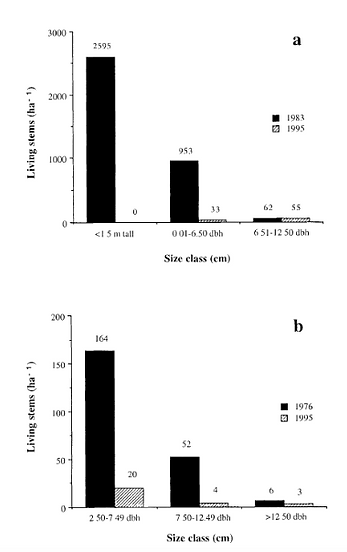
Dogwood Blight
Flowering dogwood (Cornus florida) has dramatically declined throughout the eastern deciduous forest due to the introduction of the fungus Discula destructiva, the cause of dogwood anthracnose. We compared the responses of dogwood populations to the anthracnose in both the mixed mesophytic forest of the Cumberland Plateau coves and the oak-hickory forest of the plateau uplands. This study was one of the first to document dogwood mortality due to anthracnose in the Southern Appalachians. Factors affecting the rate of anthracnose spread (evaporative potential, soil moisture, and light levels) differed between the coves and uplands, with greater mortality occuring in the coves. Decomposition of dogwood litter plays an important role in calcium cycling in these forests, and, on the poorly buffered soils of the Cumberland Plateau, calcium retention could lead to a decline in passerine birds, that depend on calcium for their shells, through loss of invertebrate food sources.





Publication:
-
Hiers, J.K. and J.P. Evans 1997. The effect of anthracnose blight on dogwood mortality and forest community structure in SE TN. Conservation Biology 11:1430-1435.
-
Dogwood blight



